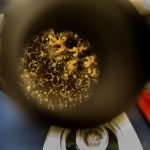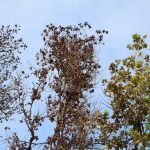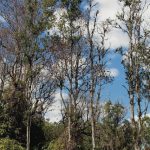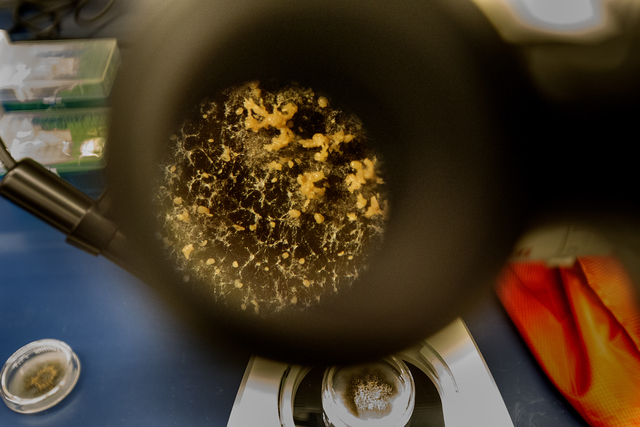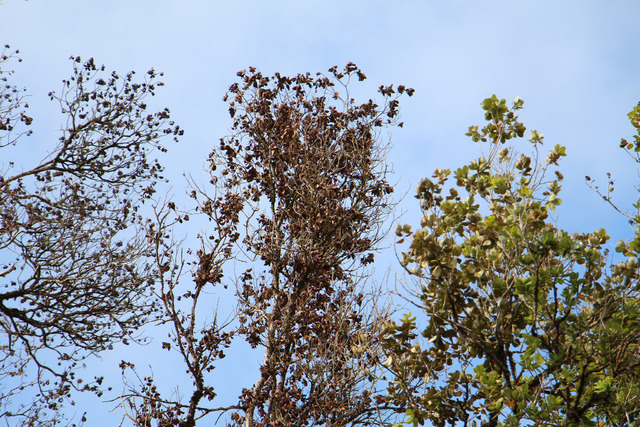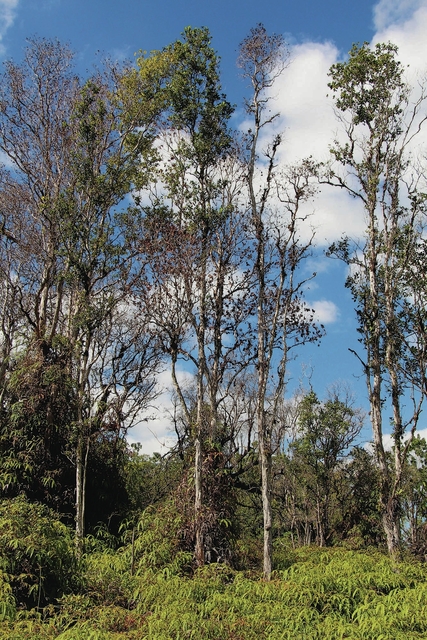KAILUA-KONA — Burrowing beetles that colonize dead ohia trees and spread wood dust on the wind are being targeted as the likely cause of a swiftly spreading fungus that threatens the island’s forests.
Although the movement of humans and animals through the forest helps disperse the rapid ohia death fungus, a plethora of ambrosia beetles and their dust — which can travel a couple of miles on the wind — help explain how the spores have managed to affect 35,000 acres within a few years, said J.B. Friday, an extension forester with the University of Hawaii Cooperative Extension Service.
“That means it’s going to be harder to stop,” Friday said. “We can have some control of people going in and out of the forest, but we haven’t much control over what blows in the wind.”
Scientists have yet to confirm that wood beetles indeed spread ROD, but they’re confident enough that they recommend property owners cut down dead trees on their land, contain the dust on a tarp, then cover the wood to reduce infestation by beetles. That’s if they are familiar with saws and felling, can do the work safely, and aren’t cutting trees that are in danger of falling across homes or roads, Friday said.
Allowing the dead trees to stand attracts the beetles, Friday said. The fungus turns green leaves to brown within a couple of weeks, rapidly killing 50 to 90 percent of infected ohia by colonizing the water circulation system within the trunk. The disease has showed no sign it will slow.
“The spread of the infection has been downwind,” he said. “We’d like to get the dead trees on the ground and covered up, particularly in new, critical areas. But controlling beetles is hard. There are so many of them. We’re not going to be spreading insecticide across the forests.”
The disease has largely spread southwest with the tradewinds from Puna through Volcano and Ka‘u, then around to West Hawaii forests, Friday said. The theory of the fungus taking to the wind would also help explain why its hasn’t been found in Hamakua or Kohala, he said.
Researchers believe rapid ohia death is also spread by those passing through infected areas and have urged hikers and forest workers to clean their clothing, tools and shoes after being in the woods.
Facing the specter of decimated forests and endangered birds and other animals pushed to extinction, scientists are doubling down on ROD. Well over 100 parties from dozens of state and federal agencies, nonprofit organizations and invasive species committees have been invited to weekly conference calls. Other islands in the chain are watching closely and hoping the fungus doesn’t spread further into the state’s more than 1 million acres of ohia, Friday said.
Researchers continue to work to set up traps for airborne wood debris to determine how the spores are dispersing. They’ve found in the laboratory that the disease goes dormant at 50 degrees. The fungus does better at lower, warmer altitudes. Though it has been found through the Wailuku River watershed up to 5,000 feet, it’s not yet clear how the disease will fare at higher elevations. Scientists are hopeful it will move more slowly on the upper slopes, Friday said.
The source of the disease is still unknown, said Lisa Keith, a research plant pathologist with the U.S. Department of Agriculture in Hilo. Comparisons to a worldwide database of similar strains has revealed no exact match, although similar strains grow on taro, anthuriums and other island plants.
“We are doing molecular analysis of the ohia fungus with other similar strains, trying to figure out how the pathogen got to Hawaii and what plant material it might have come in on,” Keith said. “The fungus might have come in on some nursery plants, certain changes might have occurred, and a new very susceptible host — ohia — became infected. We are also trying to figure out if other agricultural crops might be vulnerable to the disease.”
